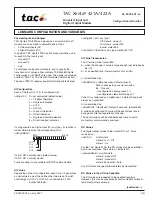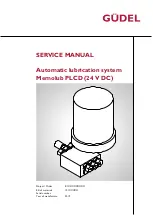
©
2003 National Instruments Corp. All rights reserved.
LabVIEW™, National Instruments™, NI™, ni.com™, and NI-VISA™ are trademarks of National Instruments Corporation.
Product and company names mentioned herein are trademarks or trade names of their respective companies. For patents
covering National Instruments products, refer to the appropriate location:
Help»Patents
in your software, the
patents.txt
file on your CD, or
ni.com/patents
.
April 2003
323256A-01
Where to Start with the NI PXI-7831R
Thank you for purchasing a National Instruments PXI-7831R. This
document explains how to set up the hardware system and use the
NI PXI-7831R. This reconfigurable I/O (RIO) device has 96 digital I/O
(DIO) lines, eight independent, 16-bit analog output (AO) channels, and
eight independent, 16-bit analog input (AI) channels.
A user-reconfigurable field-programmable gate array (FPGA) controls the
digital and analog I/O on the NI PXI-7831R. The FPGA on the RIO device
allows you to define the functionality and timing of the device, whereas
traditional multifunction I/O (MIO) devices have a fixed functionality
provided by an application-specific integrated circuit (ASIC). You can
change the functionality of the FPGA on the RIO device by using
LabVIEW, a graphical programming environment, and the LabVIEW
FPGA module to create and download a custom virtual instrument (VI) to
the FPGA. You can reconfigure the RIO device with a new VI at any time.
Using LabVIEW, you can graphically design the timing and functionality
of the RIO device without having to learn the low-level programming
language or hardware description language (HDL) that is traditionally used
for FPGA design.
Note
If you have LabVIEW and not the LabVIEW FPGA module, you cannot create new
FPGA VIs. You can only create VIs that run in LabVIEW to control existing FPGA VIs.
Some applications require tasks such as real-time, floating-point
processing or data logging while performing I/O and logic on the RIO
device. You can use the LabVIEW Real-Time Module to perform these
additional applications while also communicating with and controlling the
RIO device.
The RIO device contains flash memory to store VIs for instant loading of
the FPGA when the system is powered on.
ni.com




























